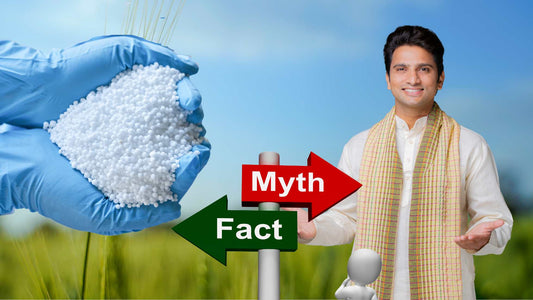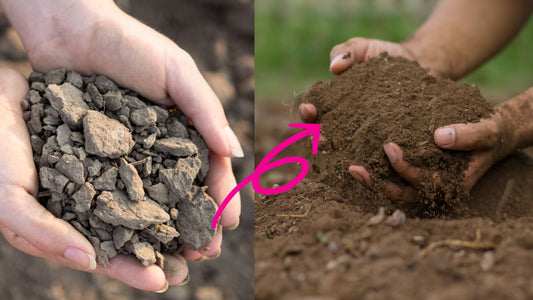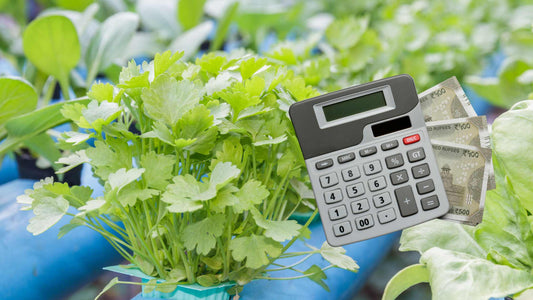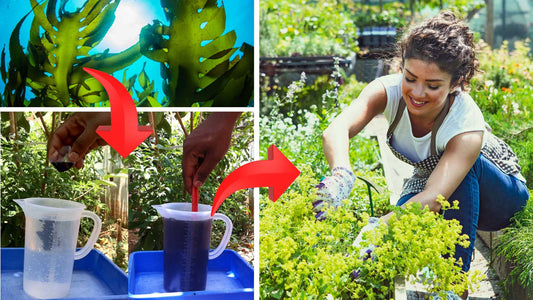Asking questions is the key to learning! Do you have any questions about plant nutrition management? Let's explore some frequently asked questions and get inspired to ask even more.
Why is fertilizer timing so important?
Applying fertilizer at the right time ensures your plants get the nutrients they need, when they need them. This improves the plant's health, maximizes yield, prevents fertilizer waste, and protects the environment.
How does soil testing help me with fertilizer planning?
Soil testing reveals current nutrient levels in your soil. This guides you on what specific fertilizers are needed and in what amounts, preventing over-application and saving money.
What are the different categories of plant nutrients?
- Fundamental: Carbon, hydrogen, oxygen (plants take these from air and water)
- Macronutrients: Nitrogen (N), phosphorus (P), potassium (K), calcium (Ca), magnesium (Mg), sulfur (S) – needed in larger amounts.
- Micronutrients: Zinc (Zn), iron (Fe), copper (Cu), manganese (Mn), boron (B), molybdenum (Mo), and nickel (Ni) – needed in small amounts.
When should I apply nitrogen fertilizer (like urea or DAP)?
Divide urea into 4 splits:
- 1st part: At sowing
- Remaining 3: During growth, before flowering
- Foliar spray: If soil application was missed, or if plants show deficiency
How about phosphorus and potassium?
Apply the full dose of both at the time of sowing as a basal dose.
When do I apply calcium, magnesium, and sulfur?
Apply all three at sowing.
- Calcium: Foliar spray (calcium nitrate) to correct deficiency symptoms.
- Magnesium: Magnesium sulfate is common. If deficient, use chelated magnesium foliar spray.
- Sulfur: Usually bentonite sulfur. For short-season crops, elemental sulfur works faster.
Best practices for micronutrients?
- Zinc, iron, copper, manganese: Apply chelated forms at sowing.
- Boron: Apply borax at sowing. For deficiency, use foliar spray
- Molybdenum & Nickel Extremely small amounts needed; best to avoid applying to prevent toxicity.
What are chelated fertilizers?
Chelates are like 'shields' that protect nutrients in the soil, making them more easily absorbed by the plants. This is especially important for micronutrients.
What's the difference between organic and chemical fertilizers?
Organic: Derived from natural sources like manure, compost, etc. Release nutrients slowly, improving soil health over time.
Chemical: Synthetically made, release nutrients quickly but can potentially harm soil microbes if used excessively.
Can I use too much fertilizer?
No! Over-fertilization can burn plant roots, create nutrient imbalances, and pollute waterways. Always follow recommended dosages.
How do I know if my plants are showing nutrient deficiency symptoms?
Look for unusual leaf discoloration (yellowing, browning), stunted growth, poor flowering/fruiting. A crop-specific guide can help identify specific deficiencies.
What is foliar fertilizer application?
Foliar feeding means applying liquid fertilizers directly to plant leaves for rapid absorption, often to correct deficiencies quickly.
How does soil pH affect fertilizer uptake?
pH measures soil acidity/alkalinity. Most nutrients are best absorbed by plants within a slightly acidic pH range (around 6-7). Lime or sulfur can be used to adjust pH levels.
Do plants need help getting carbon, hydrogen, and oxygen?
No. Plants obtain carbon from carbon dioxide in the air and hydrogen and oxygen from water during photosynthesis.
What are macronutrients, and how should they be applied?
Macronutrients (nitrogen, phosphorus, potassium, calcium, magnesium, sulfur) are needed in large amounts. It's best to add them to the soil during sowing. Nano-fertilizers are a newer option but currently mostly used for foliar feeding.
Explain the best timing for nitrogen fertilizers.
Since nitrogen (in fertilizers like urea) tends to leach, divide the dose into four parts: one before sowing and the rest during the vegetative growth phase before flowering. Foliar application is a backup if you cannot apply to the soil OR if you see deficiency symptoms. Nano-urea is a powerful foliar option.
How should we apply phosphorus and potassium?
Apply the full dose of phosphorus and potassium at sowing as they become fixed in soil. They are not suitable for standard foliar feeding (nano-DAP is an exception).
When and how is it best to apply calcium, magnesium, and sulfur?
Apply at sowing. Calcium nitrate is good for foliar sprays to correct deficiencies. Gypsum is a common calcium fertilizer; use lime if your soil is acidic. Apply magnesium as magnesium sulfate. Foliar sprays of chelated magnesium are useful for deficiencies.
What are chelated fertilizers?
In chelated fertilizers, nutrients are bound to a carrier molecule. This protects them from reacting with soil components, making them more easily absorbed by plants.
How do we add sulfur to fields?
Bentonite sulfur applied at sowing is standard (10kg/acre). For short-duration crops, elemental sulfur (3kg/acre) is faster.
How do we apply metallic micronutrients (zinc, iron, copper, manganese)?
Apply at sowing. Chelated forms are ideal to prevent reactions with soil phosphates. Foliar iron sprays are common due to iron becoming immobile in the soil.
When should we apply boron?
Borax at sowing is typical (1-2kg/acre). If necessary, use foliar disodium octaborate (with calcium nitrate) to correct deficiencies.
Do we need to apply chloride, molybdenum, or nickel?
Chloride is usually sufficient in soil. Molybdenum and nickel are needed in tiny amounts and can be toxic if overapplied, so it's best to avoid them as fertilizers.
Why split nitrogen fertilizer doses?
Nitrogen in urea/DAP is in ammonia form, which easily washes away. Split doses ensure the plant has nitrogen throughout its growth rather than a big burst that is lost.
What is the role of ammonium in calcium nitrate fertilizer?
Although primarily a calcium source, fertilizer-grade calcium nitrate has some ammonium nitrate. Ammonium ions are crucial for helping the plant actually take up the calcium.
Can I mix all fertilizers together?
No! Some combinations form unusable solids. It's best to apply separately or refer to compatibility charts. For example, superphosphates shouldn't be mixed with lime.
Organic fertilizers vs. chemical – which is better?
Both have pros and cons. Organics improve soil health long-term but release nutrients slowly. Chemical fertilizers are fast-acting but can harm soil organisms with overuse. A balanced approach is often best.
What are the benefits of foliar feeding?
Foliar sprays are great for fast correction of deficiencies, during periods when soil application is impossible (like waterlogging), and for nutrients that become immobile in the soil.
Can foliar feeding fully replace soil fertilizers?
Generally no, especially for macronutrients. Foliar feeding is best as a supplement or when soil conditions are problematic.
How do I identify nutrient deficiencies?
Common signs include yellowing leaves, stunted growth, unusual coloring, or poor flowering/fruiting. Specific symptoms vary by nutrient. Visual guides can help.
What happens if a plant gets too much fertilizer?
Excess nutrients can cause 'fertilizer burn', wilting, stunted growth, attract pests, or unbalance the soil, hindering uptake of other nutrients.
Can I fix a nutrient imbalance in the soil quickly?
Sometimes. Adding a missing nutrient can be fast-acting. If the imbalance is due to soil pH or salinity issues, correcting those takes longer.
How does soil pH affect nutrient availability?
Highly acidic or alkaline soils make some nutrients less soluble and therefore less available to plants, even if present. Ideal pH varies slightly by crop.
What's the impact of excess fertilizer on waterways?
Runoff carries excess nitrogen and phosphorus into water bodies, causing algae blooms that harm aquatic life and may create toxins.
How does organic matter improve nutrient management?
Organic matter (compost, manure, etc.) acts as a slow-release fertilizer, improves soil's ability to hold nutrients, and supports beneficial microorganisms involved in nutrient cycling.
Why is nitrogen so important for plants?
Nitrogen is a core part of chlorophyll (for photosynthesis), proteins, and DNA – essential for growth, green foliage, and good yields.
What does phosphorus do for plants?
Phosphorus is crucial for energy processes, strong roots, flowering, fruiting, and seed formation.
How does potassium help plants?
Potassium aids water regulation, disease resistance, fruit quality, and overall plant resilience.
What is calcium's role beyond strong bones (for plants)?
Calcium is vital for cell wall structure, healthy growth, and plays a part in the plant's response to stress.
Why does magnesium matter?
Magnesium is at the center of the chlorophyll molecule, making it key for photosynthesis and energy production.
How does sulfur contribute to plant health?
Sulfur is needed to make certain amino acids (building blocks of proteins) and is involved in enzyme function.
Is there a downside to excess zinc?
Yes! Too much zinc hinders uptake of other micronutrients, particularly iron and manganese.
What happens if iron is deficient?
Iron deficiency causes leaves to turn yellow between the veins while the veins stay green (called chlorosis), as iron is needed for chlorophyll production.
How does the weather affect fertilizer timing?
Heavy rain after applying fertilizers means wasted nutrients. Adjust timing for long rainy spells or irrigate lightly right after application for better absorption.
Can I use household items as fertilizer?
Yes, some! Eggshells add calcium, coffee grounds add a bit of nitrogen (and acidity), banana peels offer potassium, etc. But these are mild compared to actual fertilizers.
What's a cover crop and how does it help with nutrients?
A: Cover crops are grown between main crop seasons. Some (like legumes) add nitrogen to the soil, others prevent nutrient leaching, and they all improve soil health.
Does crop rotation impact nutrient needs?
Yes! Rotating between heavy-feeding crops and lighter ones lets the soil recover. Planting legumes can even enrich the soil with nitrogen for the following crop.
Is there an ideal fertilizer for all plants?
Sadly no. Different plants require varying ratios of nutrients. A balanced fertilizer is okay for general use, but specific formulas exist for vegetables, flowers, etc.
Are expensive fertilizers always better?
Not necessarily. Price depends on brand, concentration, etc. Compare the actual nutrient content (the N-P-K numbers) for a better idea of value.
How often should I get my soil tested?
Ideally, every 3-5 years is recommended to monitor changes. Test annually on newly cultivated land or if you suspect problems.
Is DIY soil testing accurate enough?
DIY kits can give a basic idea of pH and major nutrients. For detailed analysis and exact fertilizer recommendations, professional lab testing is best.
What is variable-rate fertilizer application?
This technology uses GPS and soil maps to apply different fertilizer rates across a field, matching the exact needs of each area and preventing overuse.
How do tissue tests compare to soil tests?
Tissue tests analyze the leaves to see what nutrients the plant is actually absorbing, while soil tests show what's present in the soil itself. Both are useful tools.
Does adding compost mean I don't need chemical fertilizers?
Not always. Compost releases nutrients slowly; chemical fertilizers may be needed for a quick boost or if your soil is severely deficient.
Does tilling the soil impact nutrient management?
Yes! Excessive tilling disrupts soil structure and beneficial microorganisms, which can hinder nutrient cycling. Minimal tillage is becoming more popular.
How does irrigation affect fertilizer use?
Overwatering leaches nutrients, so less frequent, deep watering is better. Drip irrigation allows for 'fertigation' – applying diluted fertilizer through the water.
Can pests and diseases affect nutrient uptake?
Absolutely. A weakened plant struggles to absorb nutrients, even if they're present. Good pest/disease control also supports nutrient management.
Does adding more fertilizer always mean bigger yields?
No! Over-fertilizing can harm plants and lead to waste. Optimal amount is more important than simply a large amount.
Are natural fertilizers always safer than chemical ones?
Not necessarily. Even manure, if over-applied, can cause nutrient burn or water pollution. Dosage is key, regardless of the source.
If a plant looks fine, do I still need to fertilize?
Possibly. Some deficiencies show up only much later, impacting your final yield. Soil testing is a good preventive measure.
Can I just use one super-fertilizer for everything?
Unfortunately not. While general-purpose blends exist, different plants have different ideal nutrient ratios, and these 'super blends' risk over-applying some nutrients.























